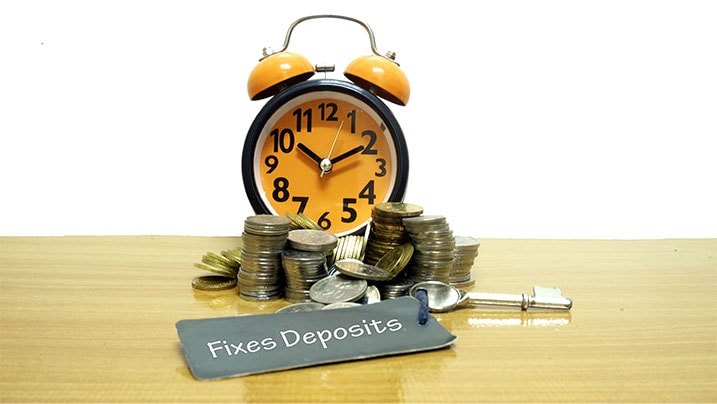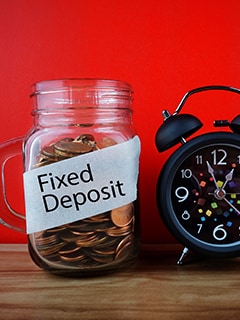CKYC Registry
-
Customer Service Contact us Service request Locate a branch
Find all the help you need
Scan the QR, get our app, and find help on your fingertips

Help CenterSupport topics, Contact us, FAQs and more
-
Login
Are you ready for an upgrade?
Login to the new experience with best features and services
-
Login
Are you ready for an upgrade?
Login to the new experience with best features and services
- Accounts
-
Deposits
IDFC FIRST Bank Deposits
View all Deposits -
Loans
IDFC FIRST Bank Loans
View all Loans - Wealth & Insure
-
Payments
IDFC FIRST Bank Payments
View all Payments -
Cards
IDFC FIRST Bank Cards
View all Cards
- Corporate Account
-
Cash Management Services
IDFC FIRST Bank Cash Management Services
View all Cash Management Services - Supply Chain Finance
-
Corporate Lending
IDFC FIRST Bank Lending
View all -
Treasury
IDFC FIRST Bank Treasury
See more details - NBFC Financing
Support topics, Contact us, FAQs and more
- IDFC FIRST Bank Accounts
-
Savings Account
-
Corporate Salary
Account -
Senior Citizens
Savings Account -
First Power
Account -
Current Account
-
NRI Savings
Account -
TASC Institutional
Account -
Savings Account
Interest Calculator
- IDFC FIRST Bank Deposits
-
Fixed Deposit
-
Recurring Deposit
-
NRI Fixed Deposit
-
Safe Deposit Locker
-
FD Calculator
-
RD Calculator
- IDFC FIRST Bank Loans
-
Personal Loan
-
Consumer Durable
Loan -
Home Loan
-
Business Loan
-
Professional Loan
-
Education Loan
-
New Car Loan
-
Pre-owned Car Loan
-
Two Wheeler Loan
-
Pre-owned Two
Wheeler Loan -
Commercial Vehicle
Loan -
Gold Loan
-
Loan Against Property
-
Loan Against Securities
-
Easy Buy EMI card
-
Personal Loan
EMI Calculator -
Education Loan
EMI Calculator -
Home Loan
EMI Calculator
- IDFC FIRST Bank Wealth & Insure
-
FIRST Select
-
FIRST Wealth
-
FIRST Private
-
Mutual Funds
-
Sovereign Gold Bond
-
Demat Account
-
Term Insurance
-
Life Insurance
-
Health Insurance
-
General Insurance
-
Bonds
-
Loan Against
Securities -
Portfolio Management
Service
- IDFC FIRST Bank Payments
-
FASTag
-
Credit Card
Bill Payments -
UPI
-
Funds Transfer
-
Forex services
-
Pay Loan EMI
- IDFC FIRST Bank Cards
-
Ashva :
Metal Credit Card -
Mayura :
Metal Credit Card -
FIRST Millennia
Credit Card -
FIRST Classic
Credit Card -
FIRST Select
Credit Card -
FIRST Wealth
Credit Card -
FIRST WOW!
Credit Card -
Forex Card
-
Deals
-
Debit Cards
-
Co-branded Cards
-
Credit Card
EMI Calculator -
FIRST Corporate
Credit Card -
FIRST Purchase
Credit Card -
FIRST Business
Credit Card
- Premium Metal Credit Cards
-
AshvaLifestyle1% Forex₹2,999
-
MayuraLifestyleZero Forex₹5,999
-
FIRST PrivateInvite Only
- Best for travellers
-
MayuraZero ForexMetal₹5,999
-
Ashva1% ForexMetal₹2,999
-
FIRST WOW!Zero ForexTravelLifetime Free
-
FIRST SWYPTravel OffersEMI₹499
-
FIRST Select1.99% ForexLifestyleLifetime Free
-
FIRST Wealth1.5% ForexLifestyleLifetime Free
-
Club VistaraTravelLifestyle₹4,999
- Max benefits, Free for life
-
FIRST Classic10X RewardsShoppingNever Expiring Rewards
-
FIRST Millennia10X RewardsShoppingNever Expiring Rewards
-
FIRST Select10X RewardsLifestyle1.99% Forex
-
FIRST Wealth10X RewardsLifestyle1.5% Forex
-
FIRST WOW!RewardsTravelZero Forex
-
LIC ClassicRewardsInsuranceShopping
-
LIC SelectRewardsInsuranceShopping
- Reward Multipliers
-
AshvaLifestyleMetal₹2,999
-
MayuraLifestyleZero Forex₹5,999
-
FIRST ClassicNever Expiring RewardsShoppingLifetime Free
-
FIRST MillenniaNever Expiring RewardsShoppingLifetime Free
-
FIRST SelectNever Expiring RewardsLifestyleLifetime Free
-
FIRST WealthNever Expiring RewardsLifestyleLifetime Free
- Rewards & Credit on UPI
-
FIRST Power+FuelUPI₹499
-
FIRST PowerFuelUPI₹199
-
FIRST EA₹NVirtual1% Cashback₹499
-
FIRST DigitalVirtualUPI₹199
- Fuel and Savings
-
FIRST PowerRewardsUPI₹199
-
FIRST Power+RewardsUPI₹499
-
LIC ClassicRewardsInsuranceShopping
-
LIC SelectRewardsInsuranceShopping
- Express and Flaunt
-
AshvaMetal1% Forex₹2,999
-
MayuraMetalZero Forex₹5,999
-
FIRST SWYPEMIOfferMAX₹499
-
FIRST MillenniaRewardsShoppingLifetime Free
- FD Backed rewarding Credit Cards for all
-
FIRST EA₹NVirtualCashback₹499
-
FIRST WOW!Zero ForexTravelLifetime Free
-
CreditPro Balance TransferTransfer & SaveReduce InterestPay Smartly
- IDFC FIRST Bank NRI Forex Solutions
-
Send money to India-Wire transfer
-
Send money to India-Digitally
-
Send money abroad
-
Max Returns FD (INR)
- IDFC FIRST Bank MSME Accounts
-
Platinum Current
Account -
Gold
Current Account -
Silver Plus
Current Account -
Merchant Multiplier
Account -
Agri Multiplier
Account -
TASC Institutional
Account -
Dynamic Current
Account -
World business
Account -
First Startup
Current Account
- IDFC FIRST Bank Business Loans
-
Unsecured - Business Loan
-
Unsecured - Professional Loan
-
Secured - Loan Against Property
-
Working Capital Loan
-
Construction Equipment Loan
-
Machinery Loan
-
Healthcare Equipment Loan
- IDFC FIRST Bank Business Solutions
-
Payment Solutions
-
Tax Payments
-
Doorstep Banking
-
Point of Sale (POS)
-
Escrow Accounts
-
NACH
-
Payment Gateway
-
UPI
-
Virtual Accounts
-
As per amendment in the Income Tax Rules, PAN or Aadhaar are to be mandatorily quoted for cash deposit or withdrawal aggregating to Rupees twenty lakhs or more in a FY. Please update your PAN or Aadhaar. Kindly reach out to the Bank’s contact center on 1800 10 888 or visit the nearest IDFC FIRST Bank branch for further queries.
-
-
Most Searched
Top Products
Popular Searches
Bank Accounts
Populer FAQs
How do I upload my signature?
Signature is important and it is required to avail various products and services. To upload your signature
1. Go to More
2. Select Customer Service Dashboard
3. Select ‘Savings/Current Accounts’
4. Select ‘Upload Signature’ to upload your signature.
How do I track service requests which I have already raised?
That's easy! Follow these steps to track your service requests:
1. From the home page of the app, tap on "Customer Service" section
2. Scroll down to "Track my service requests" to find all your requests
Sorry!
We couldn’t find ‘’ in our website
Here is what you can do :
- Try checking the spelling and search
- Search from below suggestions instead
- Widen your search & try a more generic keyword
Suggested
Get a Credit Card
Enjoy Zero Charges on All Commonly Used Savings Account Services
Open Account Now
Enjoy Zero Mark-up on Forex Transactions on your FIRST WOW! Credit Card
Apply Now
Get the assured, FD-backed FIRST Ea₹n Credit Card
Apply Now
Cumulative vs Non-Cumulative FD
Summary: The interest earned on Cumulative FDs is added to the next investment, which helps increase your investment amount and build wealth. Read the article below to learn more about both types of Fixed Deposits – Cumulative and Non-Cumulative. Fixed Deposits (FDs) are one of India's most popular investment instruments. Millions of Indians invest their life savings in fixed deposit plans offered by banks and other financial institutions. While FDs are beneficial, investors must be familiar with the various forms of fixed deposits to ensure they can get a decent return on their investment.
A fixed deposit account is created for a minimum of seven days. All leading Indian banks, including IDFC FIRST Bank, provide fixed deposit facilities to grow your idle funds. With several benefits like monthly and quarterly interest credits or quarterly compounding options, and FD interest rates of up to 7.50% p.a. (up to 8.00% p.a. for senior citizens), IDFC FIRST Bank Fixed Deposit is something you should never miss on for growing your wealth
In the article below, we will focus on two types of Fixed Deposits: non-cumulative and cumulative fixed deposits and know how they can help you meet your financial objectives.
READ MORE
Frequently Asked Questions
What is a Cumulative Fixed Deposit?
The term "cumulative" refers to a collection of things. A Cumulative Fixed Deposit is a deposit where interest is accrued or collected until the maturity of the FD .
In a Cumulative Fixed Deposit Scheme, the interest amount is compounded over the term of the deposit and paid at maturity. Longer deposits generally earn higher FD rates. For example if an FD earns interest every quarter, then the interest which is earned at the end of one quarter is re-invested at the beginning of the subsequent quarter along with the original principal amount and this sum becomes the principal for that quarter. Known as ‘compounding’, this is how cumulative fixed deposits yield higher returns upon maturity.
What is a Non-Cumulative Deposit?
The interest earned on a non-cumulative fixed deposit is paid to the depositor regularly. At IDFC FIRST Bank, interest on FD can be paid at intervals ranging from monthly and quarterly in addition to interest paid at maturity ... Because the bank does not withhold the interest, the FD provides a consistent return to investors. The power of compounding is not realised, so it pays less interest than cumulative FD. Moreover, in case of monthly interest payout, interest is paid at a slightly discounted rate, since interest is paid to the customer on monthly basis which is even before the interest is calculated at the end of the quarter. – This can be re-worded appropriately.
Difference between a Cumulative and Non-Cumulative FD
There are two types of fixed deposits: cumulative and non-cumulative. In a cumulative fixed deposit scheme, interest is paid out upon maturity of the FD and not at monthly or quarterly intervals. The interest is compounded and paid after the term. For example, if you invest at 10% interest in a financial firm's cumulative plan, you will not receive interest regularly, but only after the scheme's term.
The firm will pay the principal amount as well as any accrued interest after the term is over.
Interest is compounded quarterly in a cumulative or reinvestment fixed deposit. Later, the compounded income is re-invested with the principal. Cumulative fixed deposits have a maturity duration ranging from six months 1day to ten years.
As a result, cumulative fixed deposit schemes are sometimes called money multiplier schemes. In a non-cumulative FD, meanwhile the interest is paid at predetermined intervals at the time of booking the FD, the interval payout thus selected cannot change mid-way.
Who should invest in cumulative FD?
A cumulative fixed deposit accrues the interest earned over the entire FD tenure and pays it with the invested amount at the end of maturity. This accrual helps to compound your investments and deliver high returns at maturity. For this reason, it is also known as the money multiplier scheme.
A cumulative FD is suitable for individuals looking to invest for longer tenure and do not need regular pay-outs. Those who don’t depend on interest payout for their monthly expenses can invest in a cumulative fixed deposit and get enhanced returns at maturity. So these deposit schemes are suitable for young professionals, salaried individuals, self-employed, and business owners who have other sources of income to meet their daily expenses. Moreover, goal-based savers may also invest in a cumulative FD.
However, anyone can invest in a high-yield fixed deposit account, such as the IDFC FIRST Bank fixed deposit and earn decent interest on their idle funds.
Who should invest in a non-cumulative FD?
Unlike a cumulative FD, a non-cumulative FD pays the earned interest at fixed intervals. At IDFC FIRST Bank, you can opt for monthly or quarterlyinterest payments based on your requirements. For regular payments, these deposit schemes are suitable for individuals who depend on the interest earned through an FD for their daily expenses.
So, non-cumulative FDs are suitable for retirees, housewives, freelancers, and anyone who does not intend to invest and earn regular payouts. Most people after retirement choose a non-cumulative FD since it supports them with an additional income for their daily monetary requirements.
However, these accounts are not limited to retirees and housewives. Anyone with a need for an additional regular payout can invest in a non-cumulative FD and meet their financial requirements.
How to maximise FD returns?
Choosing the right type of deposit scheme can help you maximise your returns. You can maximise your profits with a cumulative fixed deposit of a longer tenure. The interest earned is re-invested regularly in this account. As a result, the principle is increased by the interest earned in the first cycle (usually quarterly). In the second cycle, interest is computed on the increased principal, which results in higher interest. The process continues until the cumulative FD's term ends. As a result, interest on the cumulative FD at the end is higher than on a standard non-cumulative fixed deposit, and profits are maximised.
Cumulative FD vs Non-cumulative FD: Which is better?
Everyone who wishes to open a fixed deposit account has this common question - which is a better option between a cumulative and a non-cumulative deposit? However, there is no direct comparison between them. Both deposit accounts have similar functions and objectives. The only thing that differentiates them is the interest pay-out frequency, the general thumb rule is cumulative deposits generally earn slightly higher interest rates due to the compounding effect.
. So, it is a matter of choice for the applicant to choose a suitable deposit option.
Individuals looking for long-term and goal-based deposits can invest in a cumulative FD and those for regular pay-outs can deposit money in a non-cumulative FD. Both investments are risk-free and offer decent returns. Depending on your financial requirements and objective, one may be more suitable for you than the other.
Therefore, a cumulative fixed deposit should be your choice if you want to maximise your profits. You can invest in a fixed deposit in any bank, including IDFC FIRST Bank. IDFC FIRST Bank offers appealing fixed deposit features, such as a high interest rate and monthly and quarterly pay-out options. Senior Citizens earn an additional 0.5% p.a. over and above the regular interest rates. These features ensure that you are getting the most out of your fixed deposit investment. Download the IDFC FIRST Bank mobile banking app and open your fixed deposit account today.
Disclaimer
The contents of this article/infographic/picture/video are meant solely for information purposes. The contents are generic in nature and for informational purposes only. It is not a substitute for specific advice in your own circumstances. The information is subject to updation, completion, revision, verification and amendment and the same may change materially. The information is not intended for distribution or use by any person in any jurisdiction where such distribution or use would be contrary to law or regulation or would subject IDFC FIRST Bank or its affiliates to any licensing or registration requirements. IDFC FIRST Bank shall not be responsible for any direct/indirect loss or liability incurred by the reader for taking any financial decisions based on the contents and information mentioned. Please consult your financial advisor before making any financial decision.
The features, benefits and offers mentioned in the article are applicable as on the day of publication of this blog and is subject to change without notice. The contents herein are also subject to other product specific terms and conditions and any third party terms and conditions, as applicable. Please refer our website www.idfcfirstbank.com for latest updates.























